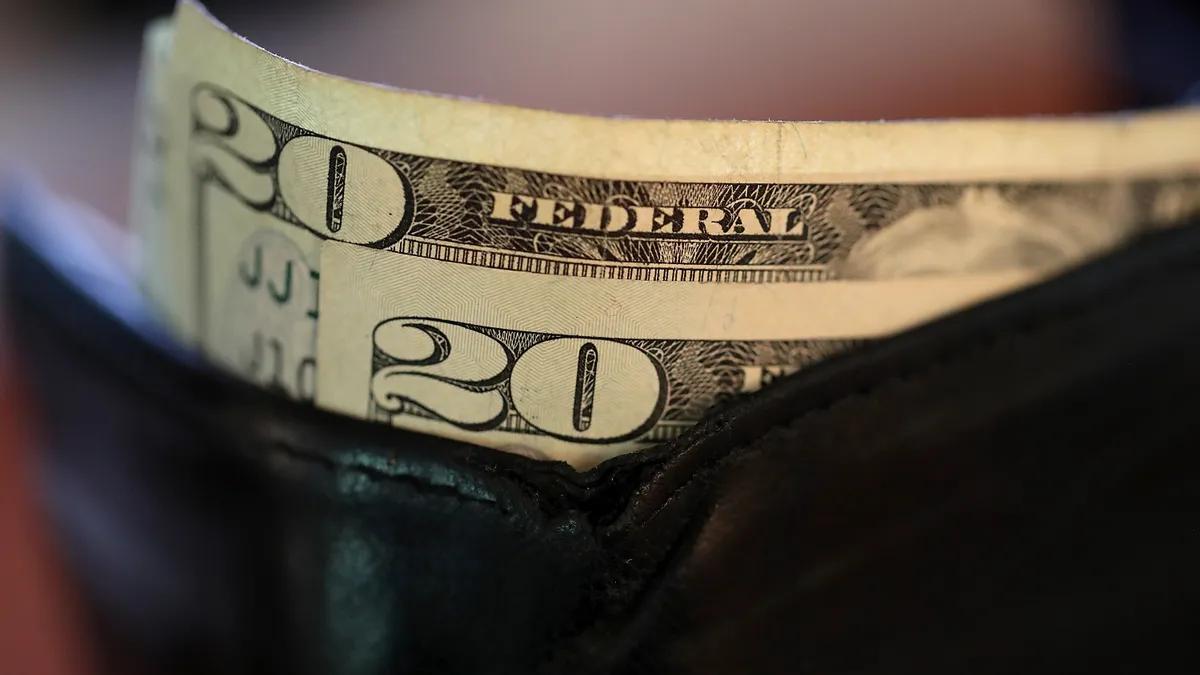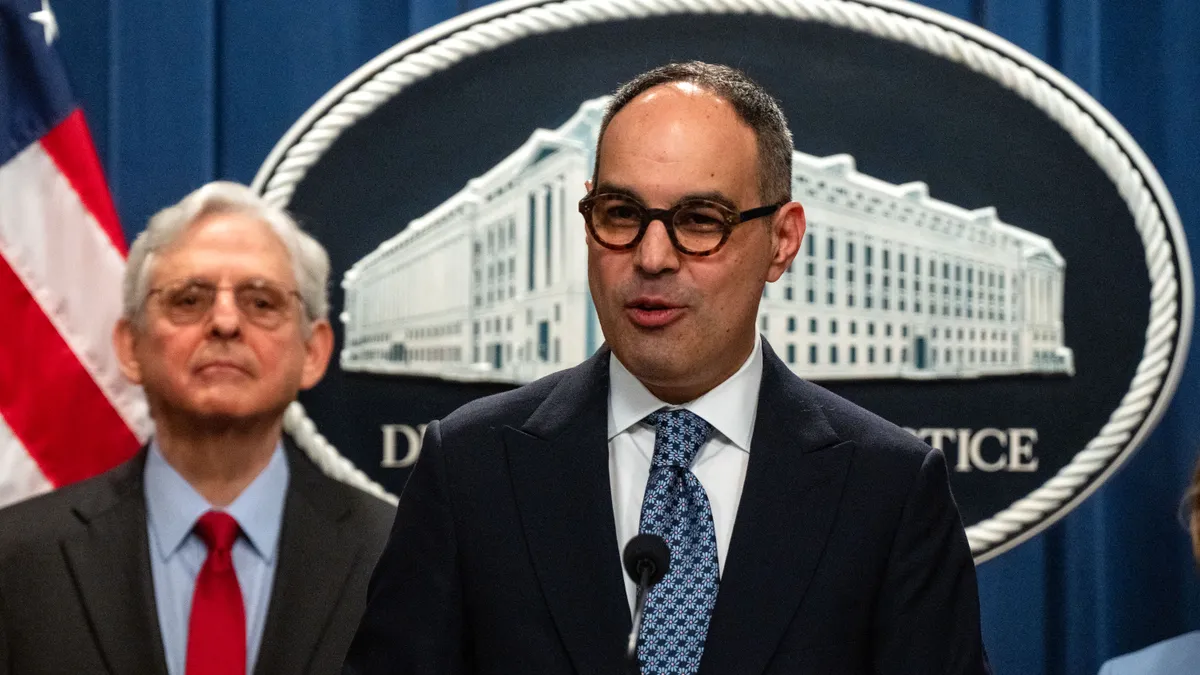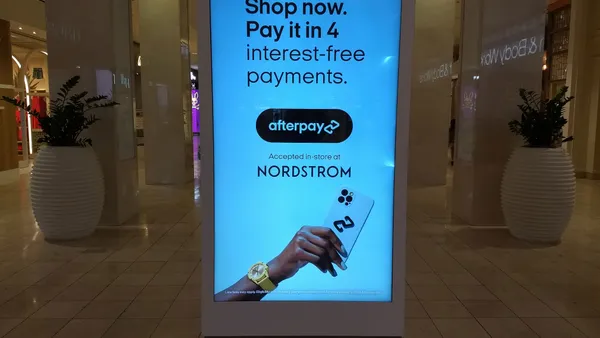Dive Brief:
- U.S. consumers' use of cash for payments edged up slightly last October, relative to 2020, but remained below 2019 levels, continuing a longer-term trend of consumers opting for alternatives, according to a Federal Reserve Bank report issued this month.
- Perhaps related to that decreased use of cash, consumers continued to hoard increasing amounts of cash at home, in their cars and elsewhere, said the May 5 report, called the Diary of Consumer Payment Choice. The average value of cash tucked away rose to $347 last year, from $173 in 2016.
- Another trend that persisted last year was low-income consumers' reliance on cash. “In 2021, the share of cash use for consumers in households making less than $25,000 was approximately three times higher (36 percent) than that of those living in households making more than $150,000 (11 percent),” the report said.
Dive Insight:
The Fed’s cash diary survey is conducted annually to collect data on U.S. consumer shopping and payment behaviors, with supplemental surveys added in the past two years to chart the impact of the COVID-19 pandemic. The report issued this month presents findings from a survey last October.
It showed U.S. consumers' cash use “increased slightly” in the first such uptick since 2016, the initial year covered by the reports. That recovery, after a seven-percentage-point drop in cash share in 2020, "could imply that consumers’ transactional use of cash may have reached its floor during the pandemic," the report said.
The Fed is measuring aspects of consumer payment activity as the government wrestles with related policy questions, including how to address the needs of cash-dependent consumers who are unbanked or underbanked and whether to follow other countries in issuing a central bank digital currency.
The pandemic highlighted the importance of such questions because it accelerated a consumer and business shift to digital payments as part of increased e-commerce. Between 2016 and 2019, before the coronavirus arrived in early 2020, the share of payments in cash was sliding by about one percentage point annually.
As the use of cash declines, the use of credit and debit cards has increased. Consumers use the cards for a majority (57%) of their payments.
Specifically with respect to payments for food, both from home and outside the home, the survey suggested new payment habits may be sticking. “While the initial shift to online payments may have been driven by necessity, consumers in 2021 may have become accustomed to making and to enjoying the benefits of ordering ahead or saving time on shopping,” the report said.
With respect to peer-to-peer payments, consumers also reduced their use of cash and increased their use of mobile apps. The share of payments with mobile apps nearly doubled last year, rising from 15% in 2020 to 29% in 2021, the Fed report said. Of those P2P payments, the share in cash dropped below 50% for the first time since 2016.
The share of consumers who have a preference for cash has fallen to 19%, from 27%, with the decline accelerated by the COVID-19 pandemic, the report said.
Only households with incomes of less than $25,000 didn't change their payments behavior much during the pandemic. Their cash use was unaffected by the deadly virus. “These consumers make up nearly 20 percent of the U.S. population, so a significant portion of the U.S. adult population remains dependent on cash for everyday payments,” the report said.
The higher level use of cash by lower-income households predates the pandemic. That suggests “these individuals are less willing — or less able — to substitute credit or debit card payments for cash,” the report said.
A decline in payments under $25 is the main reason that total payments and cash payments have fallen since 2019, according to the report. “Changes to everyday habits like stopping for a cup of coffee on the way into work or eating out are likely a significant contributor to this decline," the report said.
The biggest percentage declines of cash use were for those consumers between 18 and 24 years old. “The substitution between their cash and card use suggests this cohort’s cash use is unlikely to return to pre-pandemic levels,” the report said.
Overall, the value of currency in circulation increased by more than $423 billion, or 12% annually from October 2019 to October 2021 as consumers kept more cash on hand. “The significant increase in the average value held since 2019 shows aggregate demand for U.S. currency increased during times of uncertainty,” the report said.
The Federal Reserve Bank of Boston’s Consumer Payment Research Center developed the survey and it’s managed by the Federal Reserve Bank of Atlanta’s research department. The national survey is conducted by the University of Southern California Dornsife Center for Economic and Social Research, which surveys about 9,000 households, 4,674 of which completed the most recent query.
The report noted that the most recent survey was conducted last October when the average number of COVID-19 infections per day in the U.S. ranged from nearly 110,000 at the beginning of the month to about 72,000 at its end.












